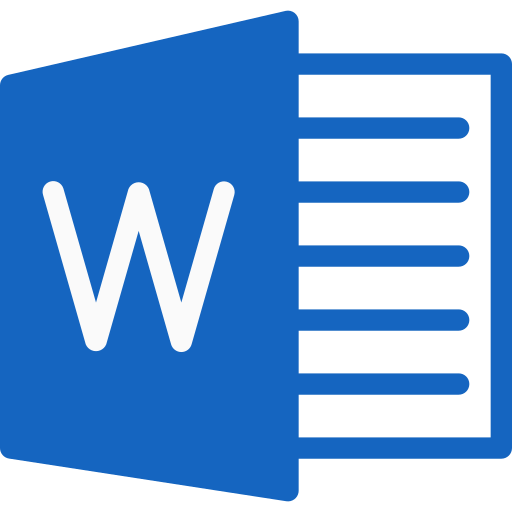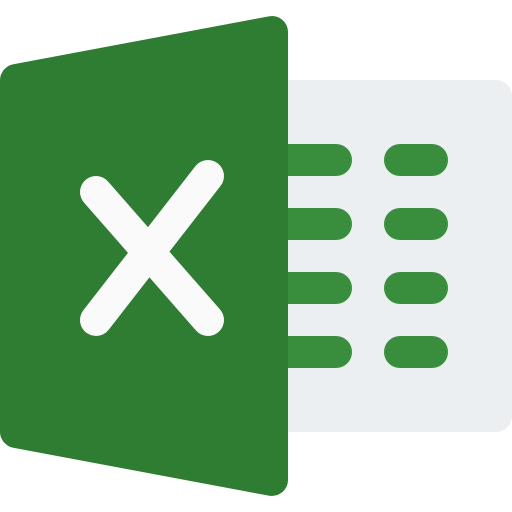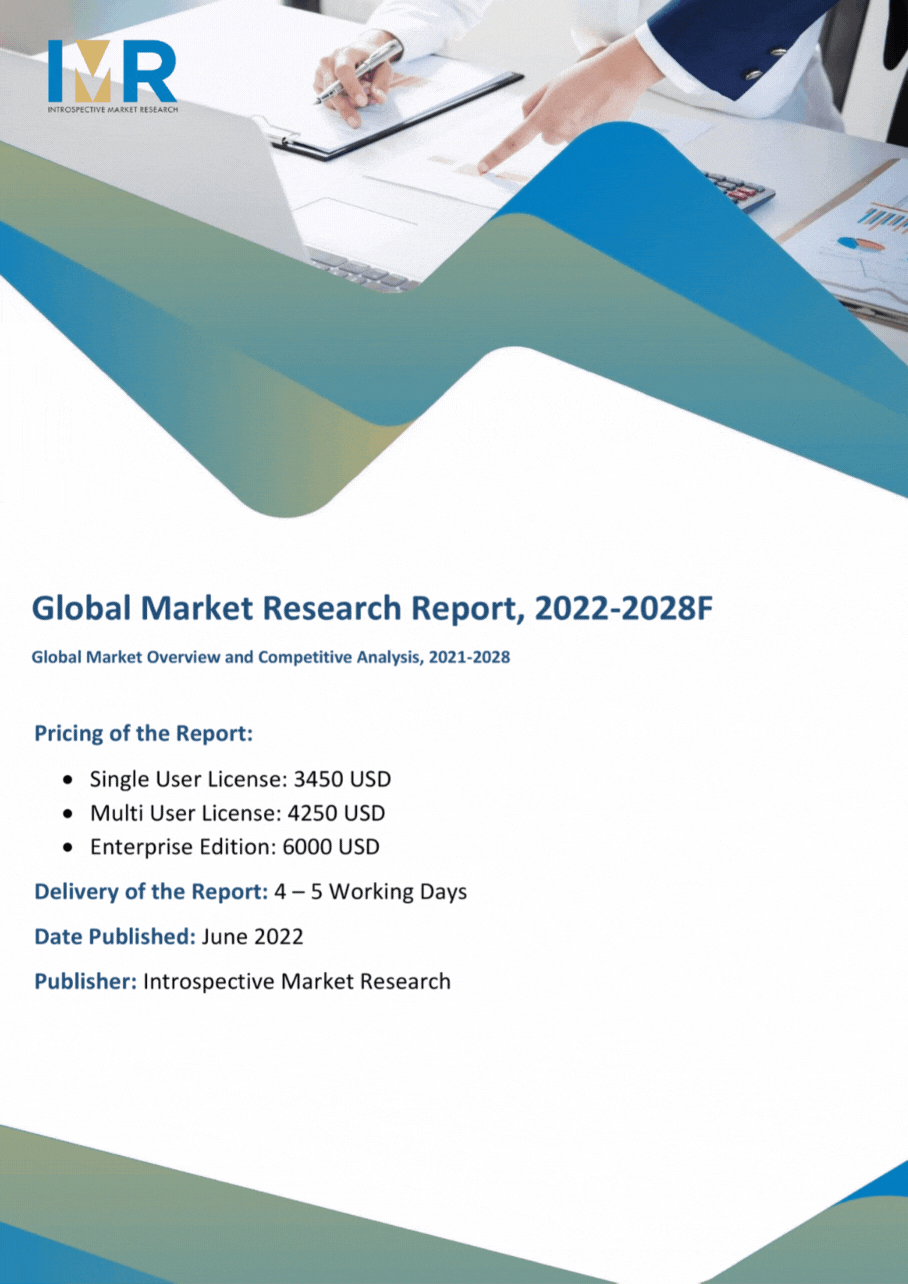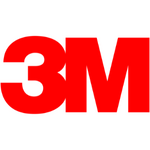Global Integration Platform as a Service Market Overview
The Global Integration Platform as a Service Market Was Estimated at USD 5.74 Billion In 2023 And Is Projected to Reach USD 56.27 Billion By 2032, Growing at A CAGR of 28.87% Over The Analysis Period 2024-2032.
Integration Platform as a Service (iPaaS) is a platform for developing and deploying integrations within the cloud and between the cloud and the enterprise. Users can use iPaaS to create integration flows that connect applications in the cloud or on-premises, and then deploy them without installing or managing any hardware or middleware. Most businesses use multiple systems, particularly in their sales, marketing, and customer service departments. iPaaS improves communication between different silos by integrating software to better share data within the organization. iPaaS also allows a company to expand its offering without having to build out additional services. Instead, it can integrate with another software that already provides that service to provide customers with a unified, more robust solution.
Using an integration platform makes sense for growing enterprises since it standardizes how to monitor, maintain, and update processes across applications that are being added and changed on a daily basis. Companies can quickly integrate applications into business processes, eliminating the need to reinvent the wheel when it comes to building integration functionality. Both line-of-business and technical users can build, manage, and maintain integration with the right iPaaS thus, strengthening the expansion of the integration platform as a service market over the forecasted period.

Market Dynamics And Factors For Integration Platform as a Service Market
Drivers
Increasing Adoption of Hybrid and Multi-cloud Infrastructure
- Several organizations are expected to adopt hybrid and multi-cloud strategies in the coming years as these systems trend in their respective sectors. Organizations are expected to choose these strategies because they do not want to depend on a single cloud provider. IBM Corp. according to data, 98% of organizations plan to adopt multiple hybrid clouds by 2021. Hybrid cloud offers the benefits of both public and private clouds, increasing the flexibility to work between both cloud solutions. In addition, it allows organizations to protect their confidential data by storing it in a private cloud while using the public cloud to store public data. The requirements for individual applications and functions vary as specialized services increase. This, in turn, encourages business managers to choose multi-cloud and hybrid solutions to use the system effectively and efficiently. In addition, it is cost-effective and reduces the risk of losing business. The adoption of a hybrid cloud will also influence the growth of the integration platform as a service (IPaaS) market. The hybrid model requires proper integration to ensure the smooth operation of the business over time and thus promote market growth.
Restraints
Interoperability and related challenges
- iPaaS provides a platform for the integration of application, data, and process integration projects involving cloud-based applications, APIs, and on-premises systems. However, such integrations are not possible with existing traditional machines, which are highly interoperable. Traditional applications that manage critical data such as consumer data and employee data are not compatible with the latest cloud integration system, so integration with iPaaS requires replacing the existing system with a new, updated system. Those interoperability capabilities make it difficult for businesses to adopt iPaaS.
Challenges
Violent competition among leading vendors
- The emerging iPaaS market has both established and specialist vendors. Large vendors have made progress integrating data into iPaaS, while SMBs have opened up by expanding their middleware. Thus, most iPaaS vendors are fragmented, and vendors expand integration solutions, focusing beyond their core competencies to improve localization and cloud-based applications and the integration process. Most iPaaS vendors struggle to establish themselves in a fragmented market. For example, major vendors such as Boomi, Informatica, MuleSoft, and SnapLogic offer the largest market share worldwide. Therefore, there is intense competition between the big players, which hinders the growth of SMEs. Thus, it is difficult for these vendors to compete with the large iPaaS vendors.
Opportunities
Increasing demand among businesses to optimize their operations
- Despite the challenges and limitations in adopting iPaaS, companies prefer it as a standalone cloud-based and on-premise service platform for application integration because it offers better integration flow management, cost-effectiveness, faster delivery, and reliability. In addition, the integration of SaaS and iPaaS platforms can be done with the help of cloud companies that offer companies the ability to share data and processes from anywhere to improve business efficiency. The iPaaS market is emerging and has the potential to boost business during the forecast period. Therefore, iPaaS is likely to increase the market among enterprises to streamline business processes.
Integration Platform as a Service (IPaaS) Market Segment Analysis:
Integration Platform as a Service (IPaaS) Market Segmented based on Deployment, Application, and End-Use Industry.
By Deployment, the Public Cloud segment is expected to dominate the market during the forecast period.
- Public cloud refers to a cloud computing model where resources are available to multiple users by sharing them over the Internet. It is a standard model that allows service providers to provide access to resources such as applications and storage that are publicly available on the Internet. Public cloud services can be offered for free or on a per-user basis, depending on the needs of end users. The reason for the widespread use of the public cloud among cloud storage service providers is ease of use and faster deployment. The public cloud service model offers businesses various advantages such as scalability, reliability, flexibility, and remote access. It is preferred by companies that have fewer regulatory barriers and are willing to outsource all or part of their inventory. The biggest concern with the public cloud is data security, which is why many companies are switching to private and hybrid cloud storage solutions. Public cloud is expected to hold the largest market share in the iPaaS market. This is the most common type of cloud deployment. A third-party cloud service provider owns and manages cloud resources (such as servers and storage) that are shared over the Internet. The cloud service provider owns and manages all the hardware, software, and other supporting infrastructure in the public cloud. In addition, it provides a wide range of data recovery capabilities and infrastructure such as hardware, operating systems, software, and middleware servers to run applications on multiple platforms. Businesses prefer to use public cloud services because they are easy to use.
By Application, API Management segment held the largest share of in 2023
- As more consumers and businesses incorporate web and mobile applications into their daily routines, companies are finding valuable new uses for previously closed data sources. APIs (Application Programming Interfaces) are the tools that enable companies to use this data, inspiring innovative developers to create new business opportunities and improve existing products, systems, and functions. APIs are a way to integrate business systems and often enable iPaaS solutions. API management is the process of tracking and managing these APIs throughout their lifecycle, from design, release, documentation, analysis, and more. Full API lifecycle management solutions allow you to build and deploy APIs and manage, secure, and manage those APIs. API management solutions ensure visibility across an organization's application interfaces and that each API is properly secured, maintained, and resolved when errors occur. These solutions also provide the ability to easily access and locate APIs across the organization for reuse in other projects. API management solutions offer a variety of features such as API design studios, API analytics, can act as an API gateway, and even API stores.
Integration Platform as a Service (IPaaS) Market Regional Insights:
Asia Pacific is Expected to Dominate the Market Over the Forecast Period.
- Growth is driven by the increasing adoption of cloud and mobile trends in China, Australia and New Zealand (ANZ), India, and Japan. Government initiatives to promote digital infrastructure are also driving the adoption of iPaaS in the region. The APAC region is expected to gain significant traction for iPaaS modules due to increasing demand for local manufacturing and high energy demand. The proliferation of cloud and mobile technologies and changing work dynamics have led to the adoption of iPaaS in various industries such as manufacturing, energy and utilities, retail and consumer goods, BFSI and telecommunications, and the adoption of iPaaS in China, Japan, Singapore, and Australia, for example. Companies such as Boomi, SAP, Oracle, Microsoft, and IBM are the key players focused on serving the APAC iPaaS market.
- The rapid growth of the Asia-Pacific region is because the region is home to many SMEs that are heavily involved in iPaaS development and deployment. China is one of the largest e-commerce markets in the world. Industry expansion is a major driver for the adoption of iPaaS solutions. The rapid growth of e-commerce operating on B2B and B2C platforms has required companies to address many areas such as online sales, ordering, and inventory management. IPaaS solutions can provide a seamless e-commerce integration solution to connect back-end processes, ERP systems, and the web. These integration tools enable the free flow of information between front-end and back-end systems and at the same time significantly reduce IT costs.
Key Players
- Informatica (US)
- Boomi Inc. (US)
- SAP SE (Germany)
- Oracle Corporation (US)
- MuleSoft LLC (US)
- Jitterbit Inc. (US)
- Workato Inc. (US)
- SnapLogic Inc. (US)
- Software AG (Germany)
- IBM Corporation (US)
- Microsoft Corporation (US)
- Tibco (US), Celigo (US)
- Zapier (US)
|
Global Integration Platform as a Service Market |
|||
|
Base Year: |
2023 |
Forecast Period: |
2024-2032 |
|
Historical Data: |
2017 to 2023 |
Market Size in 2023: |
USD 5.74 Bn. |
|
Forecast Period 2024-32 CAGR: |
28.87% |
Market Size in 2032: |
USD 56.27 Bn. |
|
Segments Covered: |
By Deployment |
|
|
|
By Application |
|
||
|
By End-Use Industry |
|
||
|
By Region |
|
||
|
Key Market Drivers: |
|
||
|
Key Market Restraints: |
|
||
|
Key Opportunities: |
|
||
|
Companies Covered in the report: |
Informatica (US), Boomi Inc. (US), SAP SE (Germany), Oracle Corporation (US), MuleSoft LLC (US), Jitterbit Inc. (US), Workato Inc. (US), and Other Major Players. |
||
Chapter 1: Introduction
1.1 Research Objectives
1.2 Research Methodology
1.3 Research Process
1.4 Scope and Coverage
1.4.1 Market Definition
1.4.2 Key Questions Answered
1.5 Market Segmentation
Chapter 2:Executive Summary
Chapter 3:Growth Opportunities By Segment
3.1 By Deployment
3.2 By Application
3.3 By End Use Industry
Chapter 4: Market Landscape
4.1 Porter's Five Forces Analysis
4.1.1 Bargaining Power of Supplier
4.1.2 Threat of New Entrants
4.1.3 Threat of Substitutes
4.1.4 Competitive Rivalry
4.1.5 Bargaining Power Among Buyers
4.2 Industry Value Chain Analysis
4.3 Market Dynamics
4.3.1 Drivers
4.3.2 Restraints
4.3.3 Opportunities
4.5.4 Challenges
4.4 Pestle Analysis
4.5 Technological Roadmap
4.6 Regulatory Landscape
4.7 SWOT Analysis
4.8 Price Trend Analysis
4.9 Patent Analysis
4.10 Analysis of the Impact of Covid-19
4.10.1 Impact on the Overall Market
4.10.2 Impact on the Supply Chain
4.10.3 Impact on the Key Manufacturers
4.10.4 Impact on the Pricing
Chapter 5: Integration Platform as a Service Market by Deployment
5.1 Integration Platform as a Service Market Overview Snapshot and Growth Engine
5.2 Integration Platform as a Service Market Overview
5.3 Public Cloud
5.3.1 Introduction and Market Overview
5.3.2 Historic and Forecasted Market Size (2017-2032F)
5.3.3 Key Market Trends, Growth Factors and Opportunities
5.3.4 Public Cloud: Geographic Segmentation
5.4 Hybrid Cloud
5.4.1 Introduction and Market Overview
5.4.2 Historic and Forecasted Market Size (2017-2032F)
5.4.3 Key Market Trends, Growth Factors and Opportunities
5.4.4 Hybrid Cloud: Geographic Segmentation
5.5 Private Cloud
5.5.1 Introduction and Market Overview
5.5.2 Historic and Forecasted Market Size (2017-2032F)
5.5.3 Key Market Trends, Growth Factors and Opportunities
5.5.4 Private Cloud: Geographic Segmentation
Chapter 6: Integration Platform as a Service Market by Application
6.1 Integration Platform as a Service Market Overview Snapshot and Growth Engine
6.2 Integration Platform as a Service Market Overview
6.3 API Management
6.3.1 Introduction and Market Overview
6.3.2 Historic and Forecasted Market Size (2017-2032F)
6.3.3 Key Market Trends, Growth Factors and Opportunities
6.3.4 API Management: Geographic Segmentation
6.4 Application Integration
6.4.1 Introduction and Market Overview
6.4.2 Historic and Forecasted Market Size (2017-2032F)
6.4.3 Key Market Trends, Growth Factors and Opportunities
6.4.4 Application Integration: Geographic Segmentation
6.5 Cloud Integration
6.5.1 Introduction and Market Overview
6.5.2 Historic and Forecasted Market Size (2017-2032F)
6.5.3 Key Market Trends, Growth Factors and Opportunities
6.5.4 Cloud Integration: Geographic Segmentation
6.6 Data Integration
6.6.1 Introduction and Market Overview
6.6.2 Historic and Forecasted Market Size (2017-2032F)
6.6.3 Key Market Trends, Growth Factors and Opportunities
6.6.4 Data Integration: Geographic Segmentation
6.7 B2B Integration
6.7.1 Introduction and Market Overview
6.7.2 Historic and Forecasted Market Size (2017-2032F)
6.7.3 Key Market Trends, Growth Factors and Opportunities
6.7.4 B2B Integration: Geographic Segmentation
6.8 Others
6.8.1 Introduction and Market Overview
6.8.2 Historic and Forecasted Market Size (2017-2032F)
6.8.3 Key Market Trends, Growth Factors and Opportunities
6.8.4 Others: Geographic Segmentation
Chapter 7: Integration Platform as a Service Market by End Use Industry
7.1 Integration Platform as a Service Market Overview Snapshot and Growth Engine
7.2 Integration Platform as a Service Market Overview
7.3 Healthcare & Life Sciences
7.3.1 Introduction and Market Overview
7.3.2 Historic and Forecasted Market Size (2017-2032F)
7.3.3 Key Market Trends, Growth Factors and Opportunities
7.3.4 Healthcare & Life Sciences: Geographic Segmentation
7.4 BFSI
7.4.1 Introduction and Market Overview
7.4.2 Historic and Forecasted Market Size (2017-2032F)
7.4.3 Key Market Trends, Growth Factors and Opportunities
7.4.4 BFSI: Geographic Segmentation
7.5 Energy & Utilities
7.5.1 Introduction and Market Overview
7.5.2 Historic and Forecasted Market Size (2017-2032F)
7.5.3 Key Market Trends, Growth Factors and Opportunities
7.5.4 Energy & Utilities: Geographic Segmentation
7.6 Manufacturing
7.6.1 Introduction and Market Overview
7.6.2 Historic and Forecasted Market Size (2017-2032F)
7.6.3 Key Market Trends, Growth Factors and Opportunities
7.6.4 Manufacturing: Geographic Segmentation
7.7 Government & Public Sectors
7.7.1 Introduction and Market Overview
7.7.2 Historic and Forecasted Market Size (2017-2032F)
7.7.3 Key Market Trends, Growth Factors and Opportunities
7.7.4 Government & Public Sectors: Geographic Segmentation
7.8 Others
7.8.1 Introduction and Market Overview
7.8.2 Historic and Forecasted Market Size (2017-2032F)
7.8.3 Key Market Trends, Growth Factors and Opportunities
7.8.4 Others: Geographic Segmentation
Chapter 8: Company Profiles and Competitive Analysis
8.1 Competitive Landscape
8.1.1 Competitive Positioning
8.1.2 Integration Platform as a Service Sales and Market Share By Players
8.1.3 Industry BCG Matrix
8.1.4 Heat Map Analysis
8.1.5 Integration Platform as a Service Industry Concentration Ratio (CR5 and HHI)
8.1.6 Top 5 Integration Platform as a Service Players Market Share
8.1.7 Mergers and Acquisitions
8.1.8 Business Strategies By Top Players
8.2 WORKATO INC.
8.2.1 Company Overview
8.2.2 Key Executives
8.2.3 Company Snapshot
8.2.4 Operating Business Segments
8.2.5 Product Portfolio
8.2.6 Business Performance
8.2.7 Key Strategic Moves and Recent Developments
8.2.8 SWOT Analysis
8.3 BOOMI LP
8.4 INFORMATICA
8.5 CELIGO
8.6 JITTERBIT
8.7 BLENDR.IO
8.8 MULESOFT
8.9 ZAPIER
8.10 ORACLE
8.11 IBM CORPORATION
8.12 AMAZON WEB SERVICES
8.13 TIBCO
8.14 PABBLY
8.15 SKYVIA
8.16 SOFTWARE AG
8.17 OTHER MAJOR PLAYERS
Chapter 9: Global Integration Platform as a Service Market Analysis, Insights and Forecast, 2017-2032
9.1 Market Overview
9.2 Historic and Forecasted Market Size By Deployment
9.2.1 Public Cloud
9.2.2 Hybrid Cloud
9.2.3 Private Cloud
9.3 Historic and Forecasted Market Size By Application
9.3.1 API Management
9.3.2 Application Integration
9.3.3 Cloud Integration
9.3.4 Data Integration
9.3.5 B2B Integration
9.3.6 Others
9.4 Historic and Forecasted Market Size By End Use Industry
9.4.1 Healthcare & Life Sciences
9.4.2 BFSI
9.4.3 Energy & Utilities
9.4.4 Manufacturing
9.4.5 Government & Public Sectors
9.4.6 Others
Chapter 10: North America Integration Platform as a Service Market Analysis, Insights and Forecast, 2017-2032
10.1 Key Market Trends, Growth Factors and Opportunities
10.2 Impact of Covid-19
10.3 Key Players
10.4 Key Market Trends, Growth Factors and Opportunities
10.4 Historic and Forecasted Market Size By Deployment
10.4.1 Public Cloud
10.4.2 Hybrid Cloud
10.4.3 Private Cloud
10.5 Historic and Forecasted Market Size By Application
10.5.1 API Management
10.5.2 Application Integration
10.5.3 Cloud Integration
10.5.4 Data Integration
10.5.5 B2B Integration
10.5.6 Others
10.6 Historic and Forecasted Market Size By End Use Industry
10.6.1 Healthcare & Life Sciences
10.6.2 BFSI
10.6.3 Energy & Utilities
10.6.4 Manufacturing
10.6.5 Government & Public Sectors
10.6.6 Others
10.7 Historic and Forecast Market Size by Country
10.7.1 U.S.
10.7.2 Canada
10.7.3 Mexico
Chapter 11: Europe Integration Platform as a Service Market Analysis, Insights and Forecast, 2017-2032
11.1 Key Market Trends, Growth Factors and Opportunities
11.2 Impact of Covid-19
11.3 Key Players
11.4 Key Market Trends, Growth Factors and Opportunities
11.4 Historic and Forecasted Market Size By Deployment
11.4.1 Public Cloud
11.4.2 Hybrid Cloud
11.4.3 Private Cloud
11.5 Historic and Forecasted Market Size By Application
11.5.1 API Management
11.5.2 Application Integration
11.5.3 Cloud Integration
11.5.4 Data Integration
11.5.5 B2B Integration
11.5.6 Others
11.6 Historic and Forecasted Market Size By End Use Industry
11.6.1 Healthcare & Life Sciences
11.6.2 BFSI
11.6.3 Energy & Utilities
11.6.4 Manufacturing
11.6.5 Government & Public Sectors
11.6.6 Others
11.7 Historic and Forecast Market Size by Country
11.7.1 Germany
11.7.2 U.K.
11.7.3 France
11.7.4 Italy
11.7.5 Russia
11.7.6 Spain
11.7.7 Rest of Europe
Chapter 12: Asia-Pacific Integration Platform as a Service Market Analysis, Insights and Forecast, 2017-2032
12.1 Key Market Trends, Growth Factors and Opportunities
12.2 Impact of Covid-19
12.3 Key Players
12.4 Key Market Trends, Growth Factors and Opportunities
12.4 Historic and Forecasted Market Size By Deployment
12.4.1 Public Cloud
12.4.2 Hybrid Cloud
12.4.3 Private Cloud
12.5 Historic and Forecasted Market Size By Application
12.5.1 API Management
12.5.2 Application Integration
12.5.3 Cloud Integration
12.5.4 Data Integration
12.5.5 B2B Integration
12.5.6 Others
12.6 Historic and Forecasted Market Size By End Use Industry
12.6.1 Healthcare & Life Sciences
12.6.2 BFSI
12.6.3 Energy & Utilities
12.6.4 Manufacturing
12.6.5 Government & Public Sectors
12.6.6 Others
12.7 Historic and Forecast Market Size by Country
12.7.1 China
12.7.2 India
12.7.3 Japan
12.7.4 Singapore
12.7.5 Australia
12.7.6 New Zealand
12.7.7 Rest of APAC
Chapter 13: Middle East & Africa Integration Platform as a Service Market Analysis, Insights and Forecast, 2017-2032
13.1 Key Market Trends, Growth Factors and Opportunities
13.2 Impact of Covid-19
13.3 Key Players
13.4 Key Market Trends, Growth Factors and Opportunities
13.4 Historic and Forecasted Market Size By Deployment
13.4.1 Public Cloud
13.4.2 Hybrid Cloud
13.4.3 Private Cloud
13.5 Historic and Forecasted Market Size By Application
13.5.1 API Management
13.5.2 Application Integration
13.5.3 Cloud Integration
13.5.4 Data Integration
13.5.5 B2B Integration
13.5.6 Others
13.6 Historic and Forecasted Market Size By End Use Industry
13.6.1 Healthcare & Life Sciences
13.6.2 BFSI
13.6.3 Energy & Utilities
13.6.4 Manufacturing
13.6.5 Government & Public Sectors
13.6.6 Others
13.7 Historic and Forecast Market Size by Country
13.7.1 Turkey
13.7.2 Saudi Arabia
13.7.3 Iran
13.7.4 UAE
13.7.5 Africa
13.7.6 Rest of MEA
Chapter 14: South America Integration Platform as a Service Market Analysis, Insights and Forecast, 2017-2032
14.1 Key Market Trends, Growth Factors and Opportunities
14.2 Impact of Covid-19
14.3 Key Players
14.4 Key Market Trends, Growth Factors and Opportunities
14.4 Historic and Forecasted Market Size By Deployment
14.4.1 Public Cloud
14.4.2 Hybrid Cloud
14.4.3 Private Cloud
14.5 Historic and Forecasted Market Size By Application
14.5.1 API Management
14.5.2 Application Integration
14.5.3 Cloud Integration
14.5.4 Data Integration
14.5.5 B2B Integration
14.5.6 Others
14.6 Historic and Forecasted Market Size By End Use Industry
14.6.1 Healthcare & Life Sciences
14.6.2 BFSI
14.6.3 Energy & Utilities
14.6.4 Manufacturing
14.6.5 Government & Public Sectors
14.6.6 Others
14.7 Historic and Forecast Market Size by Country
14.7.1 Brazil
14.7.2 Argentina
14.7.3 Rest of SA
Chapter 15 Investment Analysis
Chapter 16 Analyst Viewpoint and Conclusion
|
Global Integration Platform as a Service Market |
|||
|
Base Year: |
2023 |
Forecast Period: |
2024-2032 |
|
Historical Data: |
2017 to 2023 |
Market Size in 2023: |
USD 5.74 Bn. |
|
Forecast Period 2024-32 CAGR: |
28.87% |
Market Size in 2032: |
USD 56.27 Bn. |
|
Segments Covered: |
By Deployment |
|
|
|
By Application |
|
||
|
By End-Use Industry |
|
||
|
By Region |
|
||
|
Key Market Drivers: |
|
||
|
Key Market Restraints: |
|
||
|
Key Opportunities: |
|
||
|
Companies Covered in the report: |
Informatica (US), Boomi Inc. (US), SAP SE (Germany), Oracle Corporation (US), MuleSoft LLC (US), Jitterbit Inc. (US), Workato Inc. (US), and Other Major Players. |
||
LIST OF TABLES
TABLE 001. EXECUTIVE SUMMARY
TABLE 002. INTEGRATION PLATFORM AS A SERVICE MARKET BARGAINING POWER OF SUPPLIERS
TABLE 003. INTEGRATION PLATFORM AS A SERVICE MARKET BARGAINING POWER OF CUSTOMERS
TABLE 004. INTEGRATION PLATFORM AS A SERVICE MARKET COMPETITIVE RIVALRY
TABLE 005. INTEGRATION PLATFORM AS A SERVICE MARKET THREAT OF NEW ENTRANTS
TABLE 006. INTEGRATION PLATFORM AS A SERVICE MARKET THREAT OF SUBSTITUTES
TABLE 007. INTEGRATION PLATFORM AS A SERVICE MARKET BY DEPLOYMENT
TABLE 008. PUBLIC CLOUD MARKET OVERVIEW (2016-2028)
TABLE 009. HYBRID CLOUD MARKET OVERVIEW (2016-2028)
TABLE 010. PRIVATE CLOUD MARKET OVERVIEW (2016-2028)
TABLE 011. INTEGRATION PLATFORM AS A SERVICE MARKET BY APPLICATION
TABLE 012. API MANAGEMENT MARKET OVERVIEW (2016-2028)
TABLE 013. APPLICATION INTEGRATION MARKET OVERVIEW (2016-2028)
TABLE 014. CLOUD INTEGRATION MARKET OVERVIEW (2016-2028)
TABLE 015. DATA INTEGRATION MARKET OVERVIEW (2016-2028)
TABLE 016. B2B INTEGRATION MARKET OVERVIEW (2016-2028)
TABLE 017. OTHERS MARKET OVERVIEW (2016-2028)
TABLE 018. INTEGRATION PLATFORM AS A SERVICE MARKET BY END USE INDUSTRY
TABLE 019. HEALTHCARE & LIFE SCIENCES MARKET OVERVIEW (2016-2028)
TABLE 020. BFSI MARKET OVERVIEW (2016-2028)
TABLE 021. ENERGY & UTILITIES MARKET OVERVIEW (2016-2028)
TABLE 022. MANUFACTURING MARKET OVERVIEW (2016-2028)
TABLE 023. GOVERNMENT & PUBLIC SECTORS MARKET OVERVIEW (2016-2028)
TABLE 024. OTHERS MARKET OVERVIEW (2016-2028)
TABLE 025. NORTH AMERICA INTEGRATION PLATFORM AS A SERVICE MARKET, BY DEPLOYMENT (2016-2028)
TABLE 026. NORTH AMERICA INTEGRATION PLATFORM AS A SERVICE MARKET, BY APPLICATION (2016-2028)
TABLE 027. NORTH AMERICA INTEGRATION PLATFORM AS A SERVICE MARKET, BY END USE INDUSTRY (2016-2028)
TABLE 028. N INTEGRATION PLATFORM AS A SERVICE MARKET, BY COUNTRY (2016-2028)
TABLE 029. EUROPE INTEGRATION PLATFORM AS A SERVICE MARKET, BY DEPLOYMENT (2016-2028)
TABLE 030. EUROPE INTEGRATION PLATFORM AS A SERVICE MARKET, BY APPLICATION (2016-2028)
TABLE 031. EUROPE INTEGRATION PLATFORM AS A SERVICE MARKET, BY END USE INDUSTRY (2016-2028)
TABLE 032. INTEGRATION PLATFORM AS A SERVICE MARKET, BY COUNTRY (2016-2028)
TABLE 033. ASIA PACIFIC INTEGRATION PLATFORM AS A SERVICE MARKET, BY DEPLOYMENT (2016-2028)
TABLE 034. ASIA PACIFIC INTEGRATION PLATFORM AS A SERVICE MARKET, BY APPLICATION (2016-2028)
TABLE 035. ASIA PACIFIC INTEGRATION PLATFORM AS A SERVICE MARKET, BY END USE INDUSTRY (2016-2028)
TABLE 036. INTEGRATION PLATFORM AS A SERVICE MARKET, BY COUNTRY (2016-2028)
TABLE 037. MIDDLE EAST & AFRICA INTEGRATION PLATFORM AS A SERVICE MARKET, BY DEPLOYMENT (2016-2028)
TABLE 038. MIDDLE EAST & AFRICA INTEGRATION PLATFORM AS A SERVICE MARKET, BY APPLICATION (2016-2028)
TABLE 039. MIDDLE EAST & AFRICA INTEGRATION PLATFORM AS A SERVICE MARKET, BY END USE INDUSTRY (2016-2028)
TABLE 040. INTEGRATION PLATFORM AS A SERVICE MARKET, BY COUNTRY (2016-2028)
TABLE 041. SOUTH AMERICA INTEGRATION PLATFORM AS A SERVICE MARKET, BY DEPLOYMENT (2016-2028)
TABLE 042. SOUTH AMERICA INTEGRATION PLATFORM AS A SERVICE MARKET, BY APPLICATION (2016-2028)
TABLE 043. SOUTH AMERICA INTEGRATION PLATFORM AS A SERVICE MARKET, BY END USE INDUSTRY (2016-2028)
TABLE 044. INTEGRATION PLATFORM AS A SERVICE MARKET, BY COUNTRY (2016-2028)
TABLE 045. WORKATO INC.: SNAPSHOT
TABLE 046. WORKATO INC.: BUSINESS PERFORMANCE
TABLE 047. WORKATO INC.: PRODUCT PORTFOLIO
TABLE 048. WORKATO INC.: KEY STRATEGIC MOVES AND DEVELOPMENTS
TABLE 048. BOOMI LP: SNAPSHOT
TABLE 049. BOOMI LP: BUSINESS PERFORMANCE
TABLE 050. BOOMI LP: PRODUCT PORTFOLIO
TABLE 051. BOOMI LP: KEY STRATEGIC MOVES AND DEVELOPMENTS
TABLE 051. INFORMATICA: SNAPSHOT
TABLE 052. INFORMATICA: BUSINESS PERFORMANCE
TABLE 053. INFORMATICA: PRODUCT PORTFOLIO
TABLE 054. INFORMATICA: KEY STRATEGIC MOVES AND DEVELOPMENTS
TABLE 054. CELIGO: SNAPSHOT
TABLE 055. CELIGO: BUSINESS PERFORMANCE
TABLE 056. CELIGO: PRODUCT PORTFOLIO
TABLE 057. CELIGO: KEY STRATEGIC MOVES AND DEVELOPMENTS
TABLE 057. JITTERBIT: SNAPSHOT
TABLE 058. JITTERBIT: BUSINESS PERFORMANCE
TABLE 059. JITTERBIT: PRODUCT PORTFOLIO
TABLE 060. JITTERBIT: KEY STRATEGIC MOVES AND DEVELOPMENTS
TABLE 060. BLENDR.IO: SNAPSHOT
TABLE 061. BLENDR.IO: BUSINESS PERFORMANCE
TABLE 062. BLENDR.IO: PRODUCT PORTFOLIO
TABLE 063. BLENDR.IO: KEY STRATEGIC MOVES AND DEVELOPMENTS
TABLE 063. MULESOFT: SNAPSHOT
TABLE 064. MULESOFT: BUSINESS PERFORMANCE
TABLE 065. MULESOFT: PRODUCT PORTFOLIO
TABLE 066. MULESOFT: KEY STRATEGIC MOVES AND DEVELOPMENTS
TABLE 066. ZAPIER: SNAPSHOT
TABLE 067. ZAPIER: BUSINESS PERFORMANCE
TABLE 068. ZAPIER: PRODUCT PORTFOLIO
TABLE 069. ZAPIER: KEY STRATEGIC MOVES AND DEVELOPMENTS
TABLE 069. ORACLE: SNAPSHOT
TABLE 070. ORACLE: BUSINESS PERFORMANCE
TABLE 071. ORACLE: PRODUCT PORTFOLIO
TABLE 072. ORACLE: KEY STRATEGIC MOVES AND DEVELOPMENTS
TABLE 072. IBM CORPORATION: SNAPSHOT
TABLE 073. IBM CORPORATION: BUSINESS PERFORMANCE
TABLE 074. IBM CORPORATION: PRODUCT PORTFOLIO
TABLE 075. IBM CORPORATION: KEY STRATEGIC MOVES AND DEVELOPMENTS
TABLE 075. AMAZON WEB SERVICES: SNAPSHOT
TABLE 076. AMAZON WEB SERVICES: BUSINESS PERFORMANCE
TABLE 077. AMAZON WEB SERVICES: PRODUCT PORTFOLIO
TABLE 078. AMAZON WEB SERVICES: KEY STRATEGIC MOVES AND DEVELOPMENTS
TABLE 078. TIBCO: SNAPSHOT
TABLE 079. TIBCO: BUSINESS PERFORMANCE
TABLE 080. TIBCO: PRODUCT PORTFOLIO
TABLE 081. TIBCO: KEY STRATEGIC MOVES AND DEVELOPMENTS
TABLE 081. PABBLY: SNAPSHOT
TABLE 082. PABBLY: BUSINESS PERFORMANCE
TABLE 083. PABBLY: PRODUCT PORTFOLIO
TABLE 084. PABBLY: KEY STRATEGIC MOVES AND DEVELOPMENTS
TABLE 084. SKYVIA: SNAPSHOT
TABLE 085. SKYVIA: BUSINESS PERFORMANCE
TABLE 086. SKYVIA: PRODUCT PORTFOLIO
TABLE 087. SKYVIA: KEY STRATEGIC MOVES AND DEVELOPMENTS
TABLE 087. SOFTWARE AG: SNAPSHOT
TABLE 088. SOFTWARE AG: BUSINESS PERFORMANCE
TABLE 089. SOFTWARE AG: PRODUCT PORTFOLIO
TABLE 090. SOFTWARE AG: KEY STRATEGIC MOVES AND DEVELOPMENTS
TABLE 090. OTHER MAJOR PLAYERS: SNAPSHOT
TABLE 091. OTHER MAJOR PLAYERS: BUSINESS PERFORMANCE
TABLE 092. OTHER MAJOR PLAYERS: PRODUCT PORTFOLIO
TABLE 093. OTHER MAJOR PLAYERS: KEY STRATEGIC MOVES AND DEVELOPMENTS
LIST OF FIGURES
FIGURE 001. YEARS CONSIDERED FOR ANALYSIS
FIGURE 002. SCOPE OF THE STUDY
FIGURE 003. INTEGRATION PLATFORM AS A SERVICE MARKET OVERVIEW BY REGIONS
FIGURE 004. PORTER'S FIVE FORCES ANALYSIS
FIGURE 005. BARGAINING POWER OF SUPPLIERS
FIGURE 006. COMPETITIVE RIVALRYFIGURE 007. THREAT OF NEW ENTRANTS
FIGURE 008. THREAT OF SUBSTITUTES
FIGURE 009. VALUE CHAIN ANALYSIS
FIGURE 010. PESTLE ANALYSIS
FIGURE 011. INTEGRATION PLATFORM AS A SERVICE MARKET OVERVIEW BY DEPLOYMENT
FIGURE 012. PUBLIC CLOUD MARKET OVERVIEW (2016-2028)
FIGURE 013. HYBRID CLOUD MARKET OVERVIEW (2016-2028)
FIGURE 014. PRIVATE CLOUD MARKET OVERVIEW (2016-2028)
FIGURE 015. INTEGRATION PLATFORM AS A SERVICE MARKET OVERVIEW BY APPLICATION
FIGURE 016. API MANAGEMENT MARKET OVERVIEW (2016-2028)
FIGURE 017. APPLICATION INTEGRATION MARKET OVERVIEW (2016-2028)
FIGURE 018. CLOUD INTEGRATION MARKET OVERVIEW (2016-2028)
FIGURE 019. DATA INTEGRATION MARKET OVERVIEW (2016-2028)
FIGURE 020. B2B INTEGRATION MARKET OVERVIEW (2016-2028)
FIGURE 021. OTHERS MARKET OVERVIEW (2016-2028)
FIGURE 022. INTEGRATION PLATFORM AS A SERVICE MARKET OVERVIEW BY END USE INDUSTRY
FIGURE 023. HEALTHCARE & LIFE SCIENCES MARKET OVERVIEW (2016-2028)
FIGURE 024. BFSI MARKET OVERVIEW (2016-2028)
FIGURE 025. ENERGY & UTILITIES MARKET OVERVIEW (2016-2028)
FIGURE 026. MANUFACTURING MARKET OVERVIEW (2016-2028)
FIGURE 027. GOVERNMENT & PUBLIC SECTORS MARKET OVERVIEW (2016-2028)
FIGURE 028. OTHERS MARKET OVERVIEW (2016-2028)
FIGURE 029. NORTH AMERICA INTEGRATION PLATFORM AS A SERVICE MARKET OVERVIEW BY COUNTRY (2016-2028)
FIGURE 030. EUROPE INTEGRATION PLATFORM AS A SERVICE MARKET OVERVIEW BY COUNTRY (2016-2028)
FIGURE 031. ASIA PACIFIC INTEGRATION PLATFORM AS A SERVICE MARKET OVERVIEW BY COUNTRY (2016-2028)
FIGURE 032. MIDDLE EAST & AFRICA INTEGRATION PLATFORM AS A SERVICE MARKET OVERVIEW BY COUNTRY (2016-2028)
FIGURE 033. SOUTH AMERICA INTEGRATION PLATFORM AS A SERVICE MARKET OVERVIEW BY COUNTRY (2016-2028)
Frequently Asked Questions :
The forecast period in the Integration Platform as a Service Market research report is 2024-2032.
Informatica (US), Boomi Inc. (US), SAP SE (Germany), Oracle Corporation (US), MuleSoft LLC (US), Jitterbit Inc. (US), Workato Inc. (US), SnapLogic Inc. (US), Software AG (Germany), IBM Corporation (US), Microsoft Corporation (US), Tibco (US), Celigo (US), Zapier (US)
The Integration Platform as a Service Market is segmented into Deployment, Application, End-Use Industry, and Region. By Deployment the market is categorized into Hybrid Cloud, Public Cloud, and Private Cloud. By Application the market is categorized into API Management, Application Integration, Cloud Integration, Data Integration, B2B Integration, and Others. By End-Use Industry the market is categorized into Healthcare & Life Sciences, BFSI, Energy & Utilities, Manufacturing, Government & Public Sectors, and Others. By region, it is analyzed across North America (U.S.; Canada; Mexico), Europe (Germany; U.K.; France; Italy; Russia; Spain etc.), Asia-Pacific (China; India; Japan; Southeast Asia etc.), South America (Brazil; Argentina etc.), Middle East & Africa (Saudi Arabia; South Africa etc.).
Integration Platform as a Service (iPaaS) is a platform for developing and deploying integrations within the cloud and between the cloud and the enterprise. Users can use iPaaS to create integration flows that connect applications in the cloud or on-premises, and then deploy them without installing or managing any hardware or middleware.
The Global Integration Platform as a Service Market Was Estimated at USD 5.74 Billion In 2023 And Is Projected to Reach USD 56.27 Billion By 2032, Growing at A CAGR of 28.87% Over The Analysis Period 2024-2032.



































